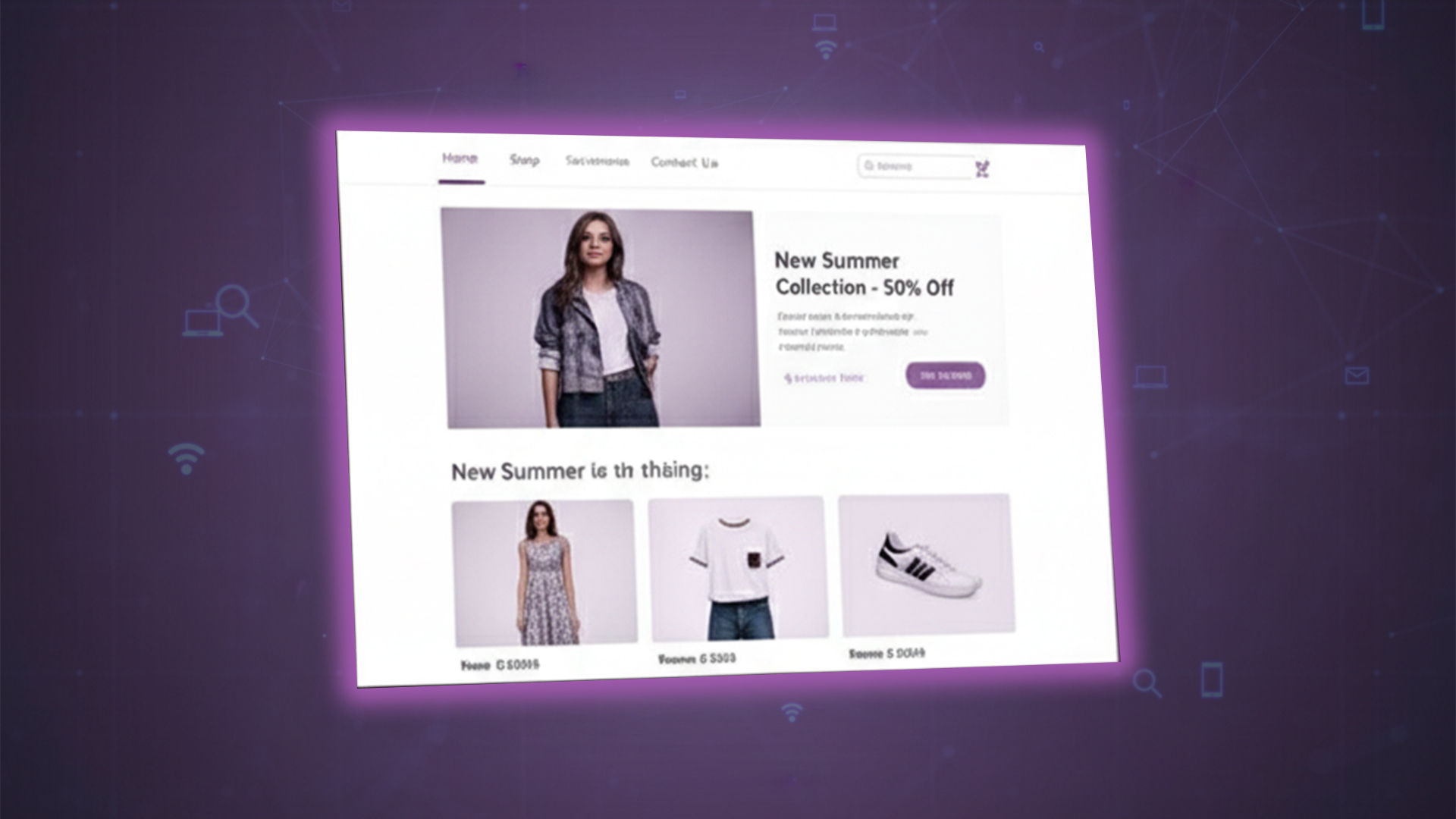We all know Levi’s—the denim king. Right now, Alia Bhatt is slaying in their wide-leg jeans, and Diljit Dosanjh owns the baggy fit in their latest ads. But the real magic isn’t just the celebs. It’s the way Levi’s product descriptions make you feel the jeans before you even add them to your cart.
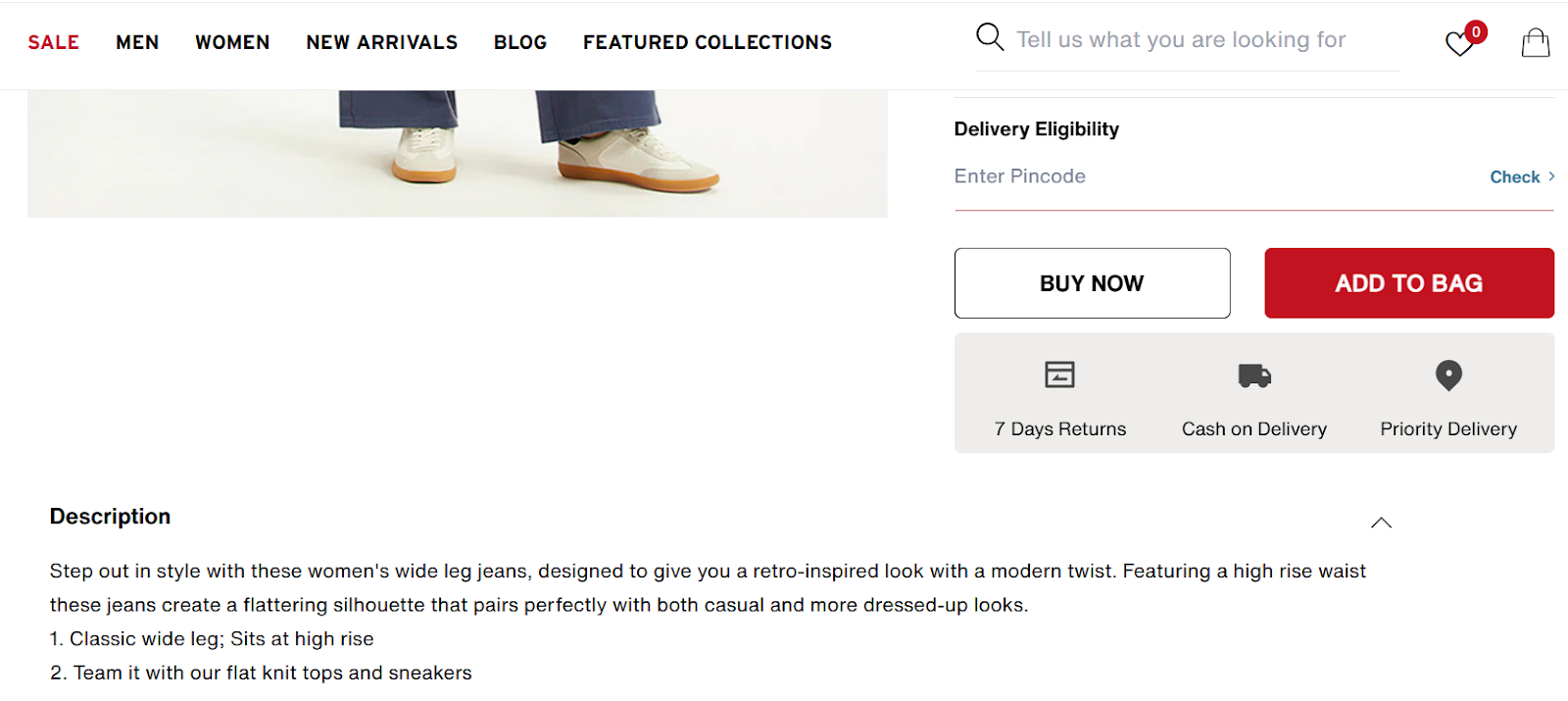
Open any Levi’s page and you’ll instantly picture yourself in the jeans. That’s the power of crisp, compelling descriptions: they drive sales and slash costly returns. In fact, 87% of shoppers say product content is the #1 factor in their online purchase decision when they can’t touch or try the item. The best part? Crafting intent-driven, high-converting descriptions is now faster and easier with AI.
Ready to make your clothing store stand out? Here are 10 proven, actionable tips to write SEO-optimized product descriptions that actually sell—plus how AI gives you scale and precision. So, if you’re a clothing store owner aiming to stand out and succeed, buckle up your shoes and get into these 10 actionable tips to write SEO-optimised product descriptions that sell—including how AI can drive scale and precision.
Why Product Descriptions Are Vital for Clothing Brands
Did you know 56% of returns happen because the item didn’t match the description? Online, customers can’t touch the fabric or try it on. So if your description is boring or missing details, they get scared and leave. Even worse – they order it, it doesn’t fit, and they return it.
Beyond returns, product discovery remains a challenge. More than half of fashion executives recognise consumer product discovery as a top use case for generative AI in 2025. With vast catalogues, making sure customers find precisely what they want hinges on clear, SEO-friendly product descriptions combined with AI-driven search and recommendation systems.The good news? AI is making all this easy now. It can write drafts in seconds, find the right keywords, and even tell you if the dress runs small based on old reviews.
10 Effective Tips to Write SEO-Optimized Product Descriptions
1. Use the exact search words your customers type (but don’t stuff)
Customers don’t search for “kurti”.They search: “yellow rayon straight printed kurta” or or “festive yellow full sleeve kurta”. Put the complete phrase naturally in the first 2–3 lines so Google ranks you on page 1.
Brands like Biba do this well by weaving intent-based keywords—such as “yellow rayon kurta” and “festive occasion”—directly into their product descriptions in a natural, high-ranking way.

Pro tip: Use AI tools like Yarnit’s PDP Generator to automatically identify high-intent search phrases your customers are already typing, as well as top-performing phrases used by bestsellers in your category. It then blends them into an optimized product copy—so you rank higher without keyword stuffing.
2. Explain the fit like you’re helping a friend
Simply saying “regular fit” is vague and unhelpful. Instead, describe exactly where the clothing sits, how it feels, and who it suits. Levi’s product descriptions provide clarity: “Sits at your natural waist, relaxed through the thigh, straight leg. ” This friendly and precise approach builds shopper confidence.
Pro tip: Continuously monitor AI-analyzed return reasons and reviews to identify fit-related patterns.
3. Make them feel the fabric in 1–2 lines
Avoid generic fabric names like “cotton.” Use sensory language so customers imagine how it feels. Uniqlo does this well by describing pieces as “a blended fabric that combines the cool feel of linen and the softness of cotton with a natural wrinkled texture,” instantly helping shoppers picture comfort and breathability.
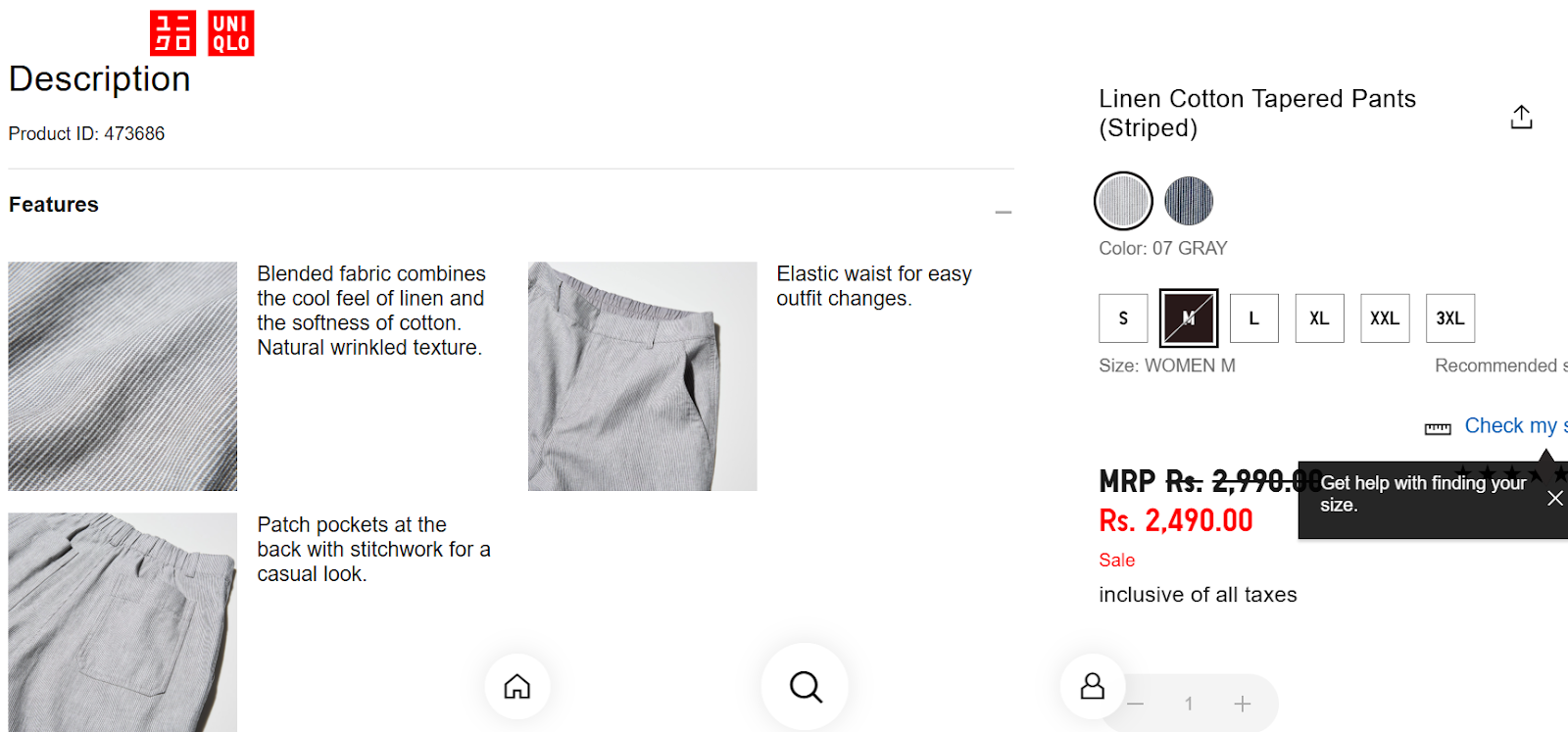
Pro Tip: Use AI content generators trained on fashion glossaries to craft creative fabric descriptions and combine this with image analysis to add texture and visual context details.
4. Tell a 2-line story — customers buy feelings first
Shoppers are purchasing an experience or feeling. Paint a vivid moment, and they’ll enjoy the product. For example, Tentree’s messaging makes customers imagine themselves in a wild forest, helping the planet with every purchase. Stories like this create an emotional connection that drives engagement.

Pro tip: AI writes the perfect emotional micro-story faster and more consistently than any copywriter. Feed it your brand vibe and the occasion once, and it delivers 10 variations in seconds — just choose the one that gives you goosebumps.
Use this prompt:
“My brand feels [playful boho / quiet luxury / modern ethnic / everyday chic]. Write 8 different 2-sentence micro-stories (under 40 words each) of a woman feeling absolutely beautiful and confident while wearing this exact [product name] at a [wedding/mehendi/date night/office party/beach evening]. Make each one vivid, emotional, and instantly imaginable.”
5. Be brutally honest about sizing and quirks
Hiding sizing issues only leads to returns. Include one clear note based on honest feedback to preempt surprises.
For example, Marks & Spencer often communicates sizing and product nuances very transparently. For instance, they clearly indicate that clothing sizes are in UK measurements rather than international standards. Alongside this, they include a disclaimer on the product page or label, such as “Fabric pattern or colour may vary slightly from the product image.”

Pro Tip: Integrate AI-driven monitoring of support tickets and reviews to keep product descriptions honest and up-to-date.
6. Give 2–3 fundamental styling ideas
Help customers imagine owning the item immediately with concrete outfit suggestions. Typical styling tips used by D2C brands might be:
- Sunday brunch: oxidised jhumkas + kolhapuris
- College day: high-waist jeans + sneakers
This practical advice increases purchase intent. The BearHouse does this well: beyond listing the pattern and sleeve details, it also highlights how the piece works for occasions like casual outings, warm-weather gatherings, and weekend wear—making it easier for shoppers to picture themselves wearing it.
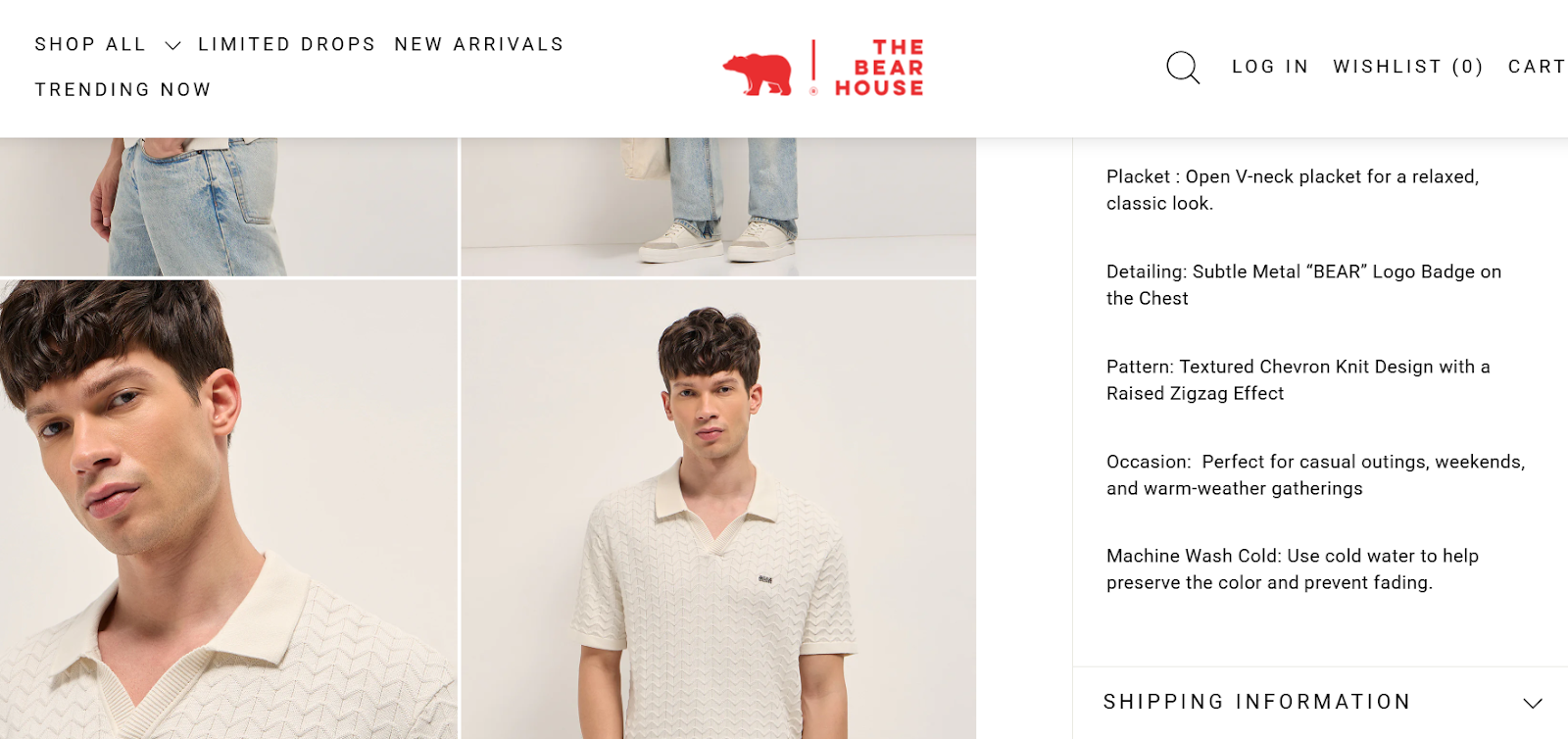
Pro tip: Let AI generate a full menu of styling ideas in seconds by giving it your customer persona and current trends — then just pick the best 3. Shoppers instantly see the complete look and are far more likely to buy (plus they often add the accessories too).
Just use this prompt:
“My customer is a [22-28 yr old college girl / 30-40 yr old working woman in a metro city]. Using current Pinterest and Instagram trends in India, give me 12 fresh, wearable styling ideas for this [exact product name]. Include occasion + exact accessories/shoes/bottoms.”
7. Use short bullets — mobile screens are tiny
Long paragraphs lead to quick site exits. Break benefits down into 4–6 crisp bullets for easy scanning. For example:
- Super-soft pure cotton voile
- Side slits for easy movement
- Fade-proof colours even after 30 washes
- Comes with matching churidar & dupatta
Bullets keep readers engaged on small screens.
Pro tip: Paste your feature list into AI platforms like Ask Yarnit and ask it to convert everything into benefit-driven, mobile-friendly bullets starting with power adjectives — done in 3 seconds.
8. Add authentic customer voice
Customer reviews carry more weight than marketing copy. Include videos and reviews to add credibility.
Example: Blissclub showcases short videos created with influencers wearing their cotton pullovers while travelling. These clips highlight real experiences—how the pullover feels, moves, and fits in everyday scenarios. Such authentic content helps shoppers imagine themselves using the product, boosting trust and purchase intent.
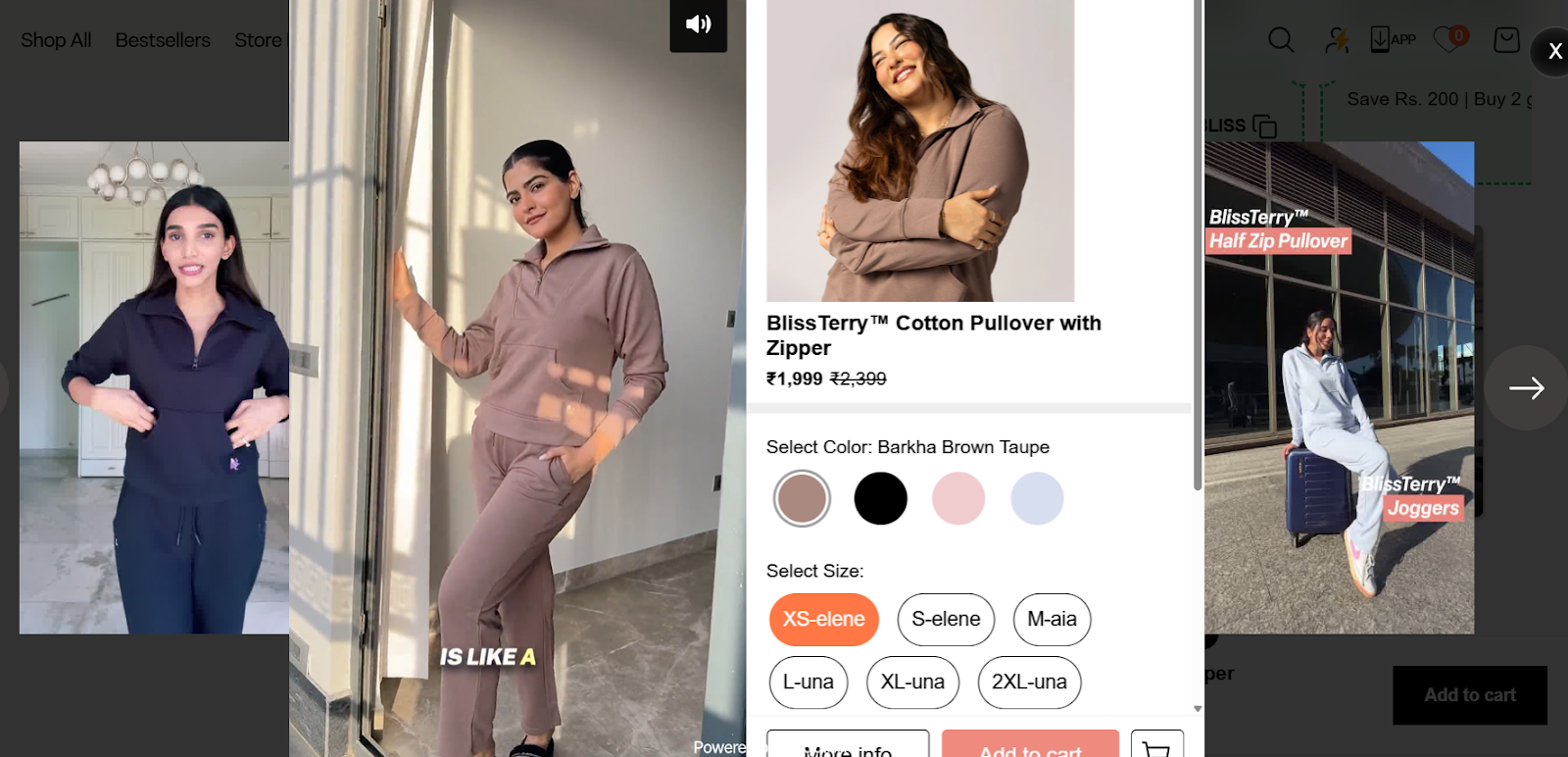
Pro tip: AI can now scan your top reviews and turn the most emotional ones into short quotes or even script voice-over lines for your reels.
9. Match your brand voice perfectly
Your product description’s tone should feel like your brand’s personality. For streetwear, you might say, “Slay the feed in this oversized hoodie.” For ethnic wear: “Carry forward the legacy of hand-block prints.” For premium brands: “Timeless elegance crafted in pure silk.” Consistency between product imagery and copy deepens brand recall.
Pro tip: Use AI tools like Yarnit that blends consumer research, competitive analysis, retailer best practices, SEO, and your brand voice to generate product descriptions that match your style—whether you’re updating one SKU or launching a whole collection.
10. End with a gentle, natural call-to-action
Don’t sell hard. Instead, provide a soft nudge that creates comfort or urgency. Examples include:
- Ready for wedding season? Grab yours before your size sells out.
- Add to cart and step into everyday comfort.
- Your new favourite piece is waiting for you.
A gentle CTA helps customers move smoothly toward checkout.
Pro tip: Ask AI for 5 gentle CTAs (mix of comfort + soft urgency) in your exact tone — A/B test the top two and watch conversions jump.
Beyond Product Descriptions: Creating a Complete Buying Experience
Compelling product descriptions are essential, but not the only factor. High-quality lifestyle images showing apparel in everyday scenarios help shoppers imagine ownership. Video testimonials can increase conversions by up to 80%, while user-generated content can raise trust and improve conversion rates. Along with it, AI-driven personalised recommendations massively boost purchases. Together, these elements create a smooth, confidence-inspiring shopping journey.
Pro Tip: With Yarnit, you can generate lifelike lifestyle images in seconds while the PDP Generator keeps every SKU’s copy fresh, SEO-ready, and consistent. If you want to see how lifestyle images can be created step-by-step, we’ve broken it down in our guide on AI-generated lifestyle visuals. Explore the complete guide here.
Clear, Engaging Descriptions Make the Difference
Strong product descriptions are vital for building shopper trust and reducing returns. As Levi’s demonstrates, descriptions that go beyond basic features to include precise fit details, sensory fabric descriptions, and relatable styling ideas create an experience that resonates with buyers.
At scale, maintaining this quality consistently across a vast product catalogue can be challenging. Tools like Yarnit offer practical assistance by automating content creation and syncing product images, descriptions, and marketing assets, helping brands keep their product pages accurate, engaging, and aligned with evolving market trends.
Ultimately, blending thoughtful description strategies with smart, supportive technology allows clothing brands to meet customer expectations more effectively and sustainably.
FAQs




